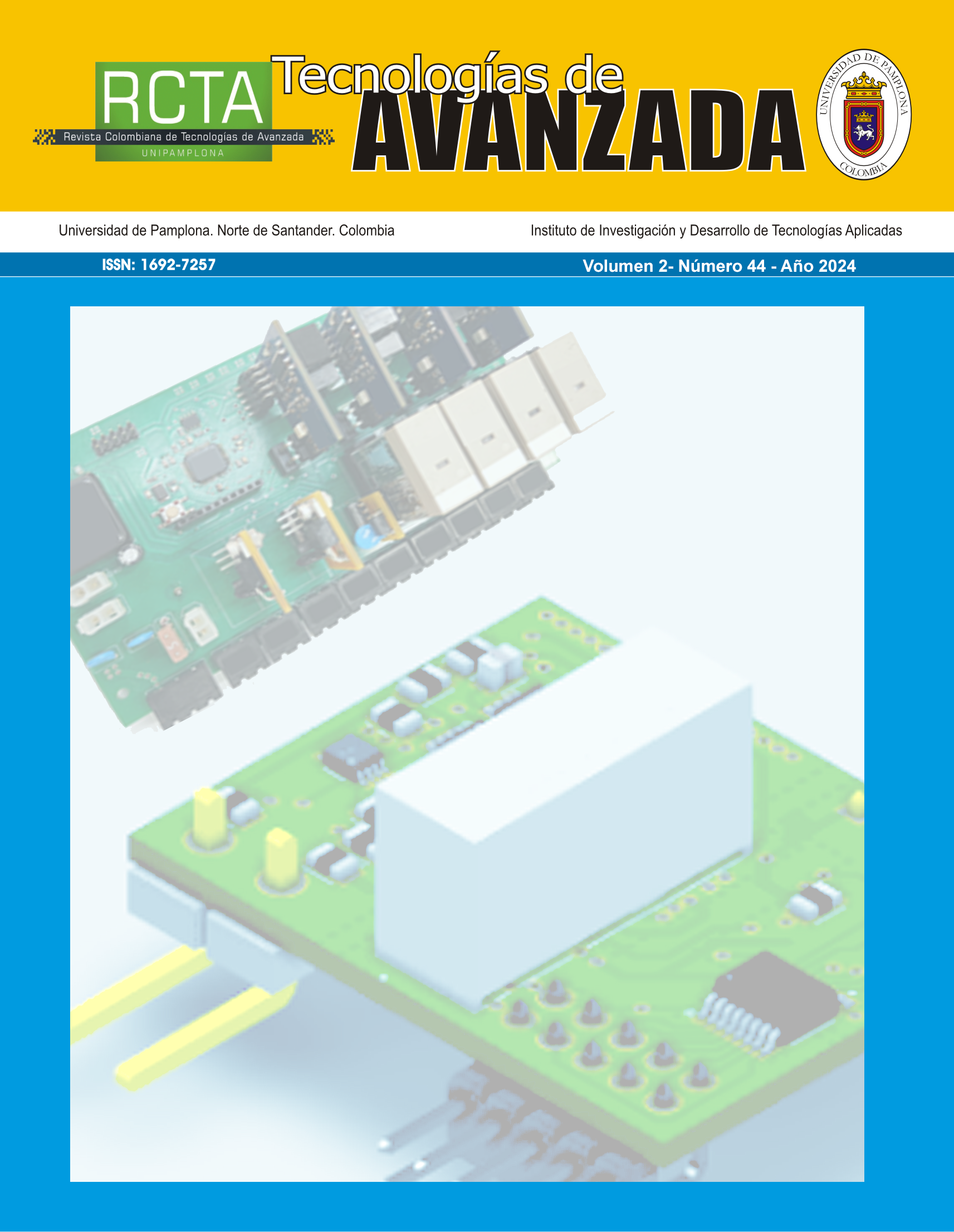Diseño de una aplicación con realidad aumentada en la creación de contenidos educativos
DOI:
https://doi.org/10.24054/rcta.v2i44.3032Palabras clave:
Realidad aumentada, educación, usabilidad, prototipo, SUMResumen
El presente estudio describe el desarrollo de una aplicación interactiva basado en Realidad Aumentada con contenido educativo para ser usado como un recurso didáctico en los diferentes momentos de una clase de geometría en básica secundaria de una institución educativa oficial. Inicialmente se escoge el tema de la clase para el contenido del prototipo, se determinan las características para el diseño de la aplicación y la definición de sus requerimientos funcionales y no funcionales y se seleccionan las herramientas de desarrollo de contenidos de Realidad Aumentada. Luego se desarrolla el prototipo el cual comprende tres escenarios: el primero, permite proyectar los sólidos geométricos en Realidad Aumentada usando marcadores de imagen. El segundo escenario permite calcular el volumen de los cuerpos geométricos dados sus datos de entrada de acuerdo a la respectiva fórmula de volumen y el tercer escenario tiene que ver con un juego de preguntas referentes al tema de volumen el cual arroja un puntaje final según las respuestas acertadas. Una vez implementado el prototipo en las diferentes sesiones de la clase, se realiza una evaluación por parte de los estudiantes en cuanto a su usabilidad y funcionalidad.
Descargas
Referencias
R. Sousa-Ferreira, R. A. Campanari-Xavier y A. S. Rodrigues-Ancioto, «La realidad virtual como herramienta para la educación básica y profesional,» 2021. [En línea]. Available: https://api.semanticscholar.org/CorpusID:234315495.
T. P. Caudell y D. W. Mizell, «Augmented reality: an application of heads-up display technology to manual manufacturing processes,» Proceedings of the Twenty-Fifth Hawaii International Conference on System Sciences,, vol. 2, pp. 659-669, 1992.
A. &. F. C. Vilches, «Ciencia, Tecnología, Sociedad: Implicaciones en la Educación Científica para el Siglo XXI,» I Congreso Internacional "Didáctica de las Ciencias" y VI Taller Internacional sobre la Enseñanza de la Física., 1999. [En línea]. Available: http://www.oei.es/historico/salactsi/ctseducacion.htm.
A. Blázquez Sevilla, «Realidad aumentada en Educación,» 2017. [En línea]. Available: https://oa.upm.es/45985/.
C. Prendres Espinoza, «Realidad aumentada y educación: análisis de experiencias prácticas.,» 2015. [En línea]. Available: https://doi.org/10.12795/pixelbit.2015.i46.12.
J. Cabero Almenara, F. García Jiménez y J. M. Barrozo Osuna, «La producción de objetos de aprendizaje en “Realidad Aumentada”: la experiencia del SAV de la Universidad de Sevilla,» 2016. [En línea]. Available: http://hdl.handle.net/11441/41045.
Gemserk, «SUM para desarrollo de videojuegos,» 2009. [En línea]. Available: http://gemserk.com/sum/.
«Unity,» 2023. [En línea]. Available: https://unity.com/es/products/unity-engine.
«Paseo por el lenguaje C#,» 2023. [En línea]. Available: https://learn.microsoft.com/es-es/dotnet/csharp/tour-of-csharp/.
«Vuforia,» 2023. [En línea]. Available: https://library.vuforia.com/.
R. F. C. y. B. P. Hernández, Metodología de la investigación, 6ta. ed ed., México D.F.: McGraw-Hill., 2014.
J. Santoyo y K. Medina, «Herramientas de software libre para la creación de contenidos educativos,» ingeniare, nº 28, p. 35–46, 2020.
S. Castro, B. Guzmán y D. Casado, «Las Tic en los procesos de enseñanza y aprendizaje,» 2007. [En línea]. Available: https://www.redalyc.org/articulo.oa?id=76102311.
K. Lee, «Augmented Reality in Education and Training,» TechTrends, 2012. [En línea]. Available: https://doi.org/10.1007/s11528-012-0559-3.
R. A. Lobo-Quintero, J. S. Santoyo-Díaz y W. Briceño-Pineda, «EducAR: uso de la realidad aumentada para el aprendizaje de ciencias básicas en ambientes educativos y colaborativos,» rev.digit.educ.ing, vol. 14, nº 27, p. 65–71, 2019.
L. Amaya y J. Santoyo, «Evaluación del uso de la realidad aumentada en la educación musical.,» Cuad. Músic. Artes Vis. Artes Escén., vol. 12, nº 1, pp. 143-157, 2017.
A. Álvarez-Martínez y J. Santoyo, «Internet de las cosas y herramientas de software libre aplicadas a la educación,» ingeniare, nº 22, pp. 11-18, 2017.
P. Marquès, Metodología para la elaboración de software educativo en Software Educativo. Guía de uso y metodología de diseño., Barcelona: Estel, 1995.
Descargas
Archivos adicionales
Publicado
Número
Sección
Licencia
Derechos de autor 2024 Gumel Goliath Guzman Guzman, Julián Santiago Santoyo Diaz

Esta obra está bajo una licencia internacional Creative Commons Atribución-NoComercial 4.0.











